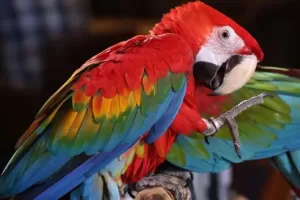If you’ve seen a parrot crack open a walnut, you know what their beaks are capable of when they clamp down. However, it is only the large parrots that eat hard nuts in the wild and not the smaller ones.
While a bite from a small parrot would still hurt and might even draw blood, it is nothing compared to the damage a bite from a large parrot would do.
There have been several cases of severe parrot bites and some reports that a bite from a large parrot can even lead to an open finger fracture.
According to BBC Science Focus, it takes an average of 1,485 Newtons of force to fracture a human finger.
It is estimated that large parrots can produce bite forces upwards of 400 PSI. A high bite force combined with sharp hookbills can easily puncture flesh and make deep cuts.
Quick Navigation
Parrots With The Strongest Bite Force
Most large parrots have strong jaws capable and can bite with great force. These are the parrots that have the worst bite:
Red And Green Macaw
Also known as the Green Winged Macaw, the Red And Green Macaw is the second largest macaw in its family. It can grow up to 35-37 inches in length and has a giant beak. The red and green macaw can produce a bite force of around 300-400 PSI.
However, bite force is not the only factor that makes these parrots a force to be reckoned with. Macaws have the worst bite of all parrots.
All macaws have a large and sharply curved beak with a pointed tip, the design of which can cause serious damage.
Macaws are generally friendly birds that like to hang out with people. However, they can sometimes engage in play biting where they bite you slightly just for fun. But even when they are just playing around, their pointed beaks can hurt the skin.
Other macaw species like the Great Green Macaw and Blue-And-Yellow Macaw are similar in size and have just as strong bite. Macaws are really not appropriate pets around kids.

Hyacinth Macaws
Hyacinth Macaws are the largest parrots in the world measuring up to 3 ft 3 inches. They have massive beaks and probably more jaw strength compared to other macaws.
However, parrot owners who have had a hyacinth macaw as a pet, describe it as a gentle and affectionate bird. They say that the Hyacinth Macaws avoid biting with all their force even when scared.
The Hyacinth macaws are called gentle giants for a reason. That being said, these parrots are still capable of breaking the hardest of nuts or wood with their strong bill.
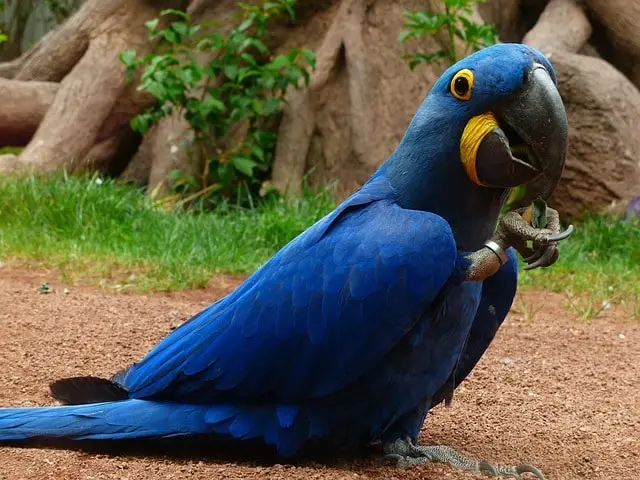
Palm Cockatoos
The palm cockatoo has a big 3.5-inch long beak, which is one of the longest among parrots. The upper and lower mandibles of the beak are so big that they don’t fully close. Their upper beak is extremely pointy and can easily pierce through the skin even by an accident.
The palm cockatoo can exert forces up to 400 PSI with its beak. In the wild, the palm cockatoos use their beak to crush all kinds of nuts, including the Kenari Nuts, which is often described as the world’s hardest nut to crack.
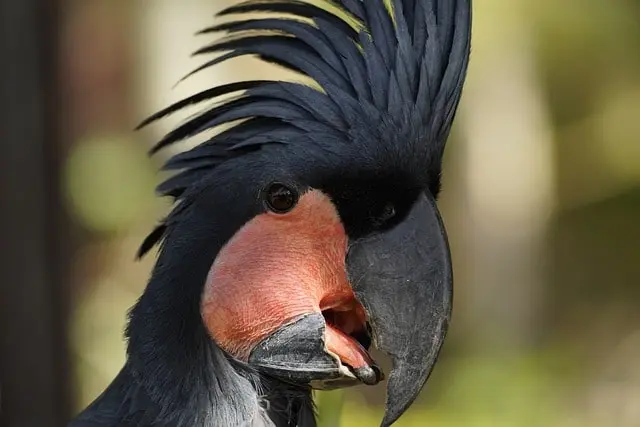
Moluccan Cockatoo
Moluccan cockatoos are high-energy birds with powerful beaks. Their beaks are not as sharp as macaws, but they are heavy and stocky.
These birds have a bite force of approximately 300 PSI. In addition to the strong bite force, moluccan cockatoos have a special beak design that is capable of doing substantially more damage.
The lower jaw of a cockatoo has a scoop-shaped region missing creating a “U” shape. This anatomical feature enables cockatoos to execute something called a “three-way” bite, providing them with more strength when gripping and biting onto objects, including food, toys, and unfortunately, at times, the fingers of their human caretakers.
Cockatoos are very affectionate birds, but they also demand constant interaction and can become aggressive when neglected or confined. Although they are overly nippy birds, they should be dealt with carefully because they have powerful bills.

African Greys
African grey parrots have a bite force of 150-200 PSI. They have short and rounded beaks, which look similar to that of other medium-sized parrots. However, African greys can clamp down with great force, and their bill structures allow them to break tough nuts.
A bite from an African grey can easily break the skin and cause severe damage. African grey parrots usually bite out of fear or stress. It’s important to read their body language and keep your distance when they are in a state where they might bite. African greys can also get aggressive during hormonal swings. This often lasts a short period, but you should be careful handling them.
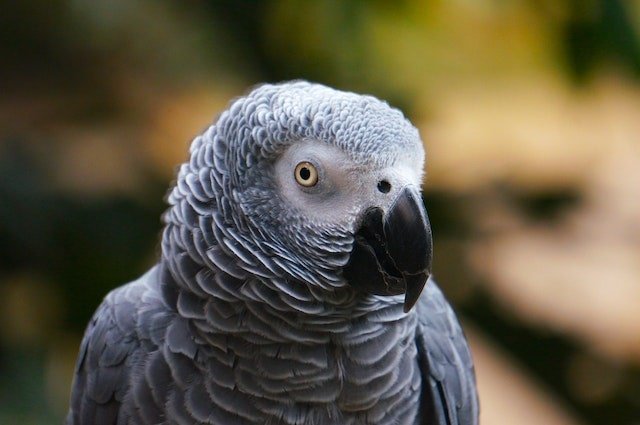
Amazon Parrots
Amazon parrots are stocky birds with heavy beaks that they use as tools in the wild for breaking hard foods. Larger Amazon parrots like the double yellow-headed amazons have greater bite force and can easily cut through skin and even break bones.
The strong beaks of Amazon parrots pack a force of 200 PSI. Just like other parrots, amazon parrots may bite when they feel threatened. When tamed, these parrots can make excellent pets.
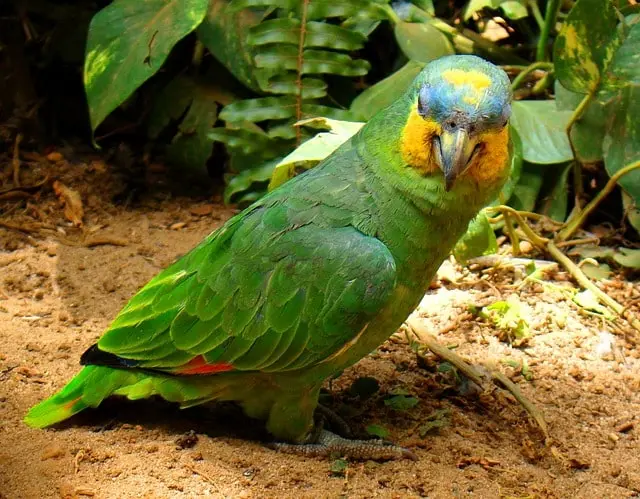
How Is Bite Force Measured In Parrots?
There are several methods by which bite force is calculated in parrots and other birds. One of the methods is using a force transducer. A force transducer is a device that converts mechanical force into an electrical signal that can be quantified and analyzed.
Another way bite force is estimated in birds is by using skull morphology. Anatomical features of the beak and skull are used to estimate bite force. This involves studying the morphology of the jaw and beak, and associated muscles.
What Factors Influence The Bite Force In Parrots?
Size Of The Parrot
There is a correlation between body size and bite force in animals. Larger parrot species usually have greater overall bite force compared to smaller species, although this can vary depending on other factors.
Some parrots, despite having a large body size have a smaller beak. For example – The short-billed corella is fairly big but has a small and slender beak.
Cockatiels also have a lighter and daintier beak in comparison to some other birds in their size category such as conures or caiques.
Beak Design
The hooked shape of the beaks gives parrots a mechanical advantage and allows them to exert greater force. Generally, the heavier and sharper beaks do more damage.
Macaws have the most dangerous beaks when it comes to biting. Their beaks are relatively large compared to their body size and their upper mandibles are pointed at the ends. The sharp and pointy design of their beaks enables them to crack hard nuts, but also makes them the worst biters.
